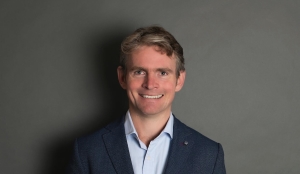EPO clarifies application of ‘computer program’ patentability exception to claims relating to computer simulations
Chris de Mauny considers the EPO’s Enlarged Board of Appeal decision in G 1/19 (SIMULATIONS). The Board implicitly endorsed the existing COMVIK approach for computer-implemented inventions and made clear that the same approach applies to simulations, including those used in design processes.
Background
The European Patent Convention (EPC) provides for certain types of subject matter to be non-patentable in article 52(2). This ‘excluded subject matter’ includes “programs for computers” (article 52(2)(c)). However, the subject matter is only excluded “to the extent to which a European patent [or application] relates to such subject-matter … as such”. Thus inventions that include or relate to such subject matter will not necessarily lead to rejection of the application or invalidity of the patent.
The EPO had developed a line of cases, centred on T641/00 (COMVIK) that provided for article 52(2) to be taken into account through the assessment of inventive step. Features of the claim related to excluded subject matter would be identified and then ignored when assessing inventive step. This is referred to as a ‘two hurdle’ approach, referring to what are two separate requirements of article 52 EPC – that of inventive step and that of the invention not being excluded subject matter as such. Thus, a known method implemented via a program for a computer would be unpatentable because it would be obvious over prior art disclosing the same method not implemented via a program for a computer – the program being excluded subject matter would be ignored.
In around 2006-2008 there was an interaction between the EPO and the English Courts as to the correct application of article 52(2) EPC. The English Court of Appeal queried the COMVIK approach in the decision of Aerotel, the EPO responded in T154/04 DUNS LICENSING and the Court of Appeal in Symbian acknowledged the different approaches but ultimately was bound to follow its own precedent. However, at that time, the EPO President made a reference to the Enlarged Board of Appeal in G3/08 raising questions about the correct application of article 52(2) EPC to computer-implemented inventions. The reference was, however, refused, although in issuing its refusal the Enlarged Board noted it was “quite comfortable” with the COMVIK approach.
In this case, the patent application, derived from WO 2004/023347, related to the simulation of a pedestrian moving around an environment populated by e.g. buildings and other persons. It was said to differ from the prior art in that, in modelling the movement of a person, it did not model the movement of a large quantity of persons in a similar way to modelling a fluid but rather sought to account for each individual’s behaviour. The application was rejected by the Examination Division. The appellate Technical Board of Appeal thought that its views on the patentability of computer-implemented simulations differed to earlier case law and, to avoid diverging case law, referred three questions to the Enlarged Board of Appeal (EBA) asking:
(1) In the assessment of inventive step, can the computer-implemented simulation of a technical system … solve a technical problem by producing a technical effect which goes beyond the simulation’s implementation on a computer, if the computer-implemented simulation is claimed as such?
(2) (A) If the answer [to (1)] is yes, what are the relevant criteria for assessing whether [it] solves a technical problem?
(B) In particular, is it a sufficient condition that the simulation is based, at least in part, on the technical principles underlying the simulated system…?
(3) What are the answers to [(1) and (2)] if the computer-implemented simulation is claimed as part of a design process, in particular as a verifying step?
Discussion: requirements for ‘technicality’
In interpreting the questions asked, and considering the kinds of simulations that might be relevant, the EBA distinguished a ‘technical system’ as one that “implies than an object is created or a process is run with some purpose based on human creativity”. This was distinguished from a model of a natural phenomena, such as a weather…



